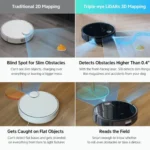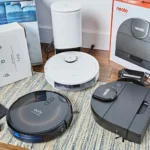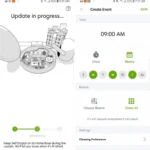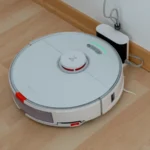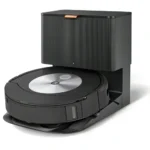It’s time to say goodbye to the hassle of dragging a heavy vacuum cleaner around the house, as smart vacuum cleaners with mapping features are here to revolutionize the floor cleaning process. If you’re wondering how these advanced technologies can improve your cleaning experience, keep reading. In this article, we’ll explore the incredible benefits of smart vacuums that can map your home’s layout and provide efficient, targeted cleaning. We’ll also dive into the workings of these mapping features, how to select the perfect smart vacuum for your needs, and address concerns around security and maintenance. Get ready to discover the convenience and added ease in your life with smart vacuum cleaners.
Benefits of Smart Vacuum Cleaners with Mapping Features
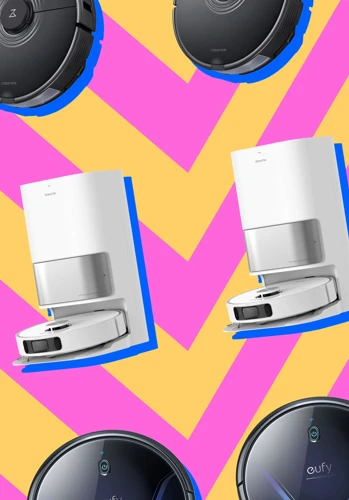
If you’re tired of traditional vacuuming methods that leave you with an unevenly cleaned floor and want to revolutionize your home cleaning routine, then a smart vacuum cleaner with mapping features is exactly what you need. These innovative devices come equipped with advanced navigation systems that allow them to map out your home and clean it with utmost efficiency and precision. By investing in a smart vacuum cleaner that boasts advanced navigation features, you’ll enjoy a range of benefits that will make cleaning a breeze. Let’s take a closer look at what these benefits are.
1. Efficient Cleaning
Efficient cleaning is one of the key benefits of a smart vacuum cleaner with mapping features. This technology enables the vacuum cleaner to clean your home more thoroughly and efficiently than a traditional vacuum cleaner, as it can identify the areas that need to be cleaned and clean them methodically. Here are some ways in which mapping features lead to efficient cleaning:
- Methodical cleaning: A smart vacuum cleaner with mapping features creates a map of your home and knows exactly where it is, where it has been, and where it still needs to clean. This helps it clean in a methodical manner, ensuring that no part of the floor is missed.
- Customizable cleaning: Some smart vacuums allow you to set cleaning preferences for each room according to your preference. For example, you can set it to clean only the high-traffic areas of your living room or clean under the bed in the bedrooms. This ensures that only the areas that require immediate cleaning are covered, saving time and energy.
- Effortless cleaning: With a smart vacuum cleaner with mapping features, there is no need to physically control the vacuum cleaner or move furniture around. The vacuum cleaner will detect obstacles and work around them, ensuring thorough and effortless cleaning.
If you have a large home or a lot of carpeted areas, a smart vacuum cleaner with mapping features is a great investment. It will allow you to enjoy a clean home, without spending all your time cleaning. These vacuums are particularly useful for people with busy schedules who want an efficient and reliable cleaning solution. By choosing a smart vacuum with advanced navigation, you can make sure your home stays clean with minimal effort.
2. Targeted Cleaning
Targeted Cleaning is another important benefit of Smart Vacuum Cleaners with Mapping Features. It means that the vacuum cleaner can clean a specific area based on the user’s command, which saves time and energy as the vacuum cleaner only cleans the desired area.
Here are some examples of how targeted cleaning works:
- If you accidentally drop food crumbs on your kitchen floor, you can direct your Smart Vacuum Cleaner to clean only the kitchen area using the mobile app or voice command.
- If you have a pet that sheds a lot of hair, you can command the vacuum cleaner to focus only on the areas where the pet spends most of its time.
- If you have visitors coming over and only your living area needs to be cleaned, you can set the vacuum cleaner to clean that area only.
This feature is especially important for people who have limited mobility or suffer from back pain because it reduces the need to move around the vacuum cleaner. Additionally, targeted cleaning minimizes disturbance to the things around the house.
Smart Vacuum Cleaners with Mapping Features can accomplish this feature through the combination of advanced navigation systems, sensors, and algorithms. They can either use GPS or cameras to detect their location and determine the boundaries of the cleaning area. They can also detect obstacles in their way and divert their course to avoid them.
If you are interested in purchasing a smart vacuum cleaner with a mapping feature, make sure to check out our article on Top Smart Vacuums with Navigation Systems, where we cover the best models in the market that offer targeted cleaning, among other features.
3. Time-Saving
Smart vacuum cleaners with mapping features are not only efficient and convenient, but they also provide a significant benefit of time-saving. By mapping out your home and creating an optimized cleaning path, these devices can save you precious time that would otherwise be spent manually vacuuming your floors.
Without mapping features, traditional vacuum cleaners either follow a random path or move in a straight line, which can be time-consuming and ineffective. However, the mapping technology in smart vacuums allows them to quickly determine the most efficient path to take for optimal cleaning.
According to a study conducted by iRobot, the Roomba i7 with mapping features was able to clean a living room in 24 minutes, while a traditional vacuum took an average of 55 minutes to clean the same room. This means that smart vacuum cleaners with mapping features can save you up to half an hour per cleaning session, allowing you to spend your time on other important tasks.
Smart vacuums with mapping features also have the ability to remember your home’s layout and create a customized cleaning schedule. This means that not only will your floors be cleaned efficiently, but you don’t have to worry about scheduling regular vacuuming sessions yourself.
However, it’s important to note that the time-saving benefit is dependent on the smart vacuum’s mapping accuracy and navigation system (anchor: /smart-vacuum-adv-nav/). The more advanced the mapping and navigation features are, the more efficiently and quickly the device will clean your floors.
The time-saving benefit that smart vacuum cleaners with mapping features provide is a game-changer for busy households. With these devices, you can save time on cleaning and have more time to focus on other tasks.
4. Convenience
Smart vacuum cleaners with mapping features offer a high degree of convenience to users, making them a popular choice for homeowners. With their advanced features and technology, these devices can carry out cleaning tasks with minimal intervention from the user. Some of the key convenience-related benefits of smart vacuum cleaners with mapping features are:
| Feature | Explanation |
|---|---|
| Remote Control | Users can control their smart vacuums with mapping features from anywhere in their home with a remote control or smartphone app. This means that the user does not have to be physically present to turn on, pause or stop the device. |
| Virtual Boundaries | With the help of the mapping feature, virtual boundaries can be set up within a home to restrict the movement of the vacuum cleaner. This ensures that the device does not enter a certain area, for example, the pet zone, where it might disturb the pets or eat up their food. |
| Intelligent Recharging | The mapping feature allows smart vacuum cleaners to locate the docking station and recharge automatically when their battery runs low. This means that the device can be left to carry out cleaning tasks without worrying about the battery running out. |
| Automatic Scheduling | Users can set up a cleaning schedule for their smart vacuums with mapping features. This allows the device to carry out its cleaning tasks at a specified time, for example, when the user is out of the house, ensuring that the cleaning task is carried out without any intervention from the user. |
The convenience of these devices is unparalleled as they offer a high degree of automation, allowing users to spend their time on other important tasks. These devices continue to revolutionize the way people clean their homes, and it is clear that the technology behind them will advance even further in the coming years. For those looking to purchase a smart vacuum cleaner with mapping features, it is important to consider factors such as floor plan size, battery life, compatibility with smart home systems, and price before making a final decision. Check out some of our top picks for smart vacuum cleaners with mapping features to help you with your research.
How Mapping Features Work in Smart Vacuum Cleaners
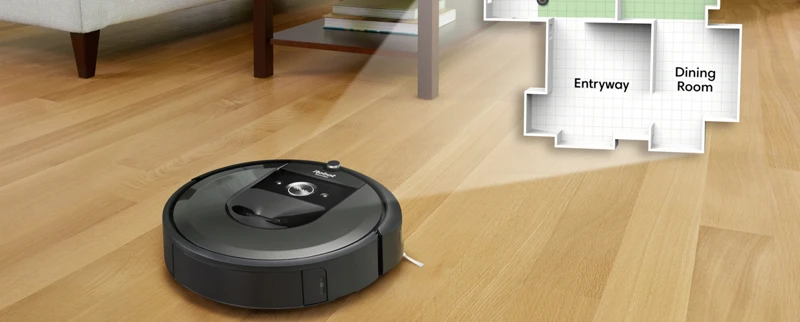
The ability of smart vacuum cleaners to maneuver around obstacles and efficiently clean a room is due to their advanced mapping features. These mapping features allow the vacuum to create a detailed map of the room and navigate accordingly. Understanding how these features work is essential in choosing the right smart vacuum cleaner for your home’s specific needs. Let’s dive deeper into the technology behind smart vacuum mapping. For tips on advanced navigation in smart vacuums, visit the article on smart vacuum navigation tips.
1. Sensors and Cameras
Sensors and cameras are the backbone of mapping features in smart vacuum cleaners. These sensors and cameras work together to help the vacuum understand its environment and navigate through spaces with ease. The sensors are strategically placed around the vacuum and enable it to detect objects, walls, and other obstacles while the cameras capture a detailed perspective of the surrounding area.
The sensors used in mapping features often include infrared sensors, bump sensors, and cliff sensors. Infrared sensors emit beams that detect obstacles and thus prevent collisions. Bump sensors, on the other hand, detect impact whenever the vacuum makes contact with an object like furniture while cliff sensors prevent the vacuum cleaner from taking a tumble down a staircase.
By processing data from these sensors and cameras, smart vacuums build a detailed map of the environment, which helps them navigate and clean more efficiently. For instance, the vacuum cleaner can differentiate between open spaces and furniture, allowing it to effortlessly navigate through the living room and dining area.
The mapping technology of smart vacuums allows them to adjust to different floor types, including carpets, hardwood floors, and tile. This is due to the fact that they can recognize when they move from one type of flooring to another; hence they can adjust their suction power or height accordingly.
The use of sensors and cameras also helps to improve the accuracy of the smart vacuum’s navigation capabilities. As a result, users can enjoy efficient cleaning, as the vacuum cleans spaces in a precise and consistent manner. This means that no spot in the room gets missed.
However, it is worth noting that the mapping features of smart vacuums are not infallible. Issues such as navigation errors or getting stuck in tight corners can still occur, especially in spaces with a lot of obstacles. Nonetheless, with recent advancements in smart vacuum navigation technology, these issues are becoming less prevalent.
For more information on smart vacuum navigation tips and how to overcome potential issues, check out our article on Smart Vacuum Navigation. You can also read about the latest trend in smart vacuums on our article on Revolutionizing Home Cleaning with Smart Vacuum Navigation Systems.
2. Simultaneous Localization and Mapping (SLAM)
Simultaneous Localization and Mapping, or SLAM, is an advanced technology that allows smart vacuum cleaners to create a map of the room while navigating around obstacles. The map created by SLAM technology enables the robot to remember already cleaned areas, avoid places that require cleaning, and return to the charging dock when necessary.
SLAM works by merging two different processes: localization and mapping. Localization is the process of determining the robot’s position in relation to its environment, while mapping is creating a map of the environment. By combining these two processes, smart vacuum cleaners with SLAM technology can create an accurate map of a house and its rooms, and then use this map for efficient and targeted cleaning.
To perform SLAM, smart vacuum cleaners are equipped with various sensors, such as infrared sensors, sonar sensors, and laser rangefinders. These sensors help the robot to create a detailed map of the floor plan and detect obstacles to avoid collisions.
SLAM technology is essential for smart vacuum cleaners because it enables the robot to clean an entire floor plan in a systematic way. By creating a map of the rooms, the robot can navigate between different areas, clean around furniture, and avoid getting stuck in tight corners or under obstacles.
However, SLAM technology is not perfect, and smart vacuum cleaners may encounter issues with navigation. Sometimes robots with SLAM technology may get confused and repeat cleaning the same area multiple times or miss some areas due to mapping inaccuracies. That’s why it’s essential to follow some navigational tips to avoid such issues, which you can found in our article on smart vacuum navigation tips.
Despite these potential navigation issues, SLAM technology has revolutionized the way smart vacuum cleaners clean homes. With SLAM, these devices are more efficient, intelligent, and capable of delivering a personalized cleaning experience.
3. Path Planning Algorithms
Smart vacuum cleaners equipped with mapping features are known for their efficiency and targeted cleaning abilities, enabling them to clean your home with ease. This is possible due to the advanced path planning algorithms that these devices employ.
Path planning algorithms are designed to determine the most optimal route for the smart vacuum cleaner to take in order to cover every inch of the floor. These algorithms enable the vacuum cleaner to plan and execute its cleaning path in real-time, ensuring that no areas are missed during the cleaning process.
In most cases, path planning algorithms are based on a technique called simultaneous localization and mapping (SLAM), which uses a map of the environment created by the vacuum cleaner’s sensors and cameras to plan the most efficient cleaning path. The algorithm takes into account the location of obstacles, furniture, and other household items to ensure that the vacuum cleaner can navigate around them with ease.
One of the benefits of path planning algorithms is that they can help ensure that the smart vacuum cleaner covers the entire floor space, even in the presence of obstacles. By employing efficient routing strategies, the vacuum cleaner can clean around furniture and other obstacles in a way that maximizes its cleaning efficiency.
However, despite their advanced capabilities, smart vacuum cleaners with mapping features are not immune to navigation issues. For example, some models may have difficulty navigating narrow or cluttered spaces, which can result in incomplete cleaning. To address this issue, it’s important to choose a vacuum cleaner with an advanced path planning algorithm that can successfully navigate around all obstacles and keep your floors clean.
Path planning algorithms are an essential component of smart vacuum cleaners equipped with mapping features. They allow the device to navigate around the room in the most efficient way possible, covering every inch of the floor space. However, it’s important to be aware of potential navigation issues, such as those discussed in our article about smart vacuum navigation issues, to ensure that you choose a vacuum cleaner that can clean your home thoroughly and with ease.
4. Room Recognition Technology
Smart vacuum cleaners with mapping features are equipped with room recognition technology which is essential in identifying and navigating different rooms in the house. The technology is a key aspect that sets these smart vacuum cleaners apart from traditional vacuums.
Room recognition technology works by creating a visual map of the house, and then categorizing each room based on its features. The vacuum cleaner will then use the map and the room categorizations to plan optimal cleaning paths based on the size of each room, the number of obstacles, and the placement of furniture.
One of the key benefits of this technology is that it ensures that the vacuum cleaner won’t miss any spots. With traditional vacuums, it is common to miss spots as they rely on users manually moving them around the house. On the other hand, smart vacuums with room recognition technology are designed to cover the entire floor area of different rooms in the house, ensuring every nook and cranny is covered.
Additionally, room recognition technology can also be programmed to only focus on specific rooms in the house. For example, if there is a room that is rarely used and hardly gathers dust or debris, users can program the vacuum cleaner to avoid that room during cleaning cycles.
Some smart vacuums with mapping features also allow users to map multiple floors. This means that once the vacuum cleaner has created a map of the first floor of a house, it can use that map as a reference point when cleaning the second floor.
Room recognition technology in smart vacuum cleaners with mapping features offers a range of benefits to users including efficient cleaning, targeted cleaning, time-saving, convenience and a thorough clean. It is an essential feature in smart vacuums and is worth considering when purchasing a vacuum cleaner for your home.
Choosing a Smart Vacuum Cleaner with Mapping Features
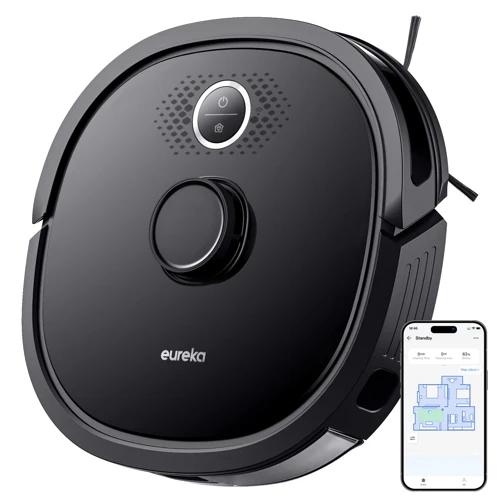
As the demand for smart home technology continues to rise, more and more people are turning to smart vacuum cleaners with mapping features to make their lives easier. But with so many options on the market, how can you choose the best one for your home? Let’s take a closer look at some important factors to consider when selecting a smart vacuum cleaner with mapping features. From floor plan size to battery life, compatibility with smart home systems to price, there are several key considerations that will help you make an informed decision. So, let’s dive in and explore what you need to know before making your purchase!
1. Floor Plan Size
When choosing a smart vacuum cleaner with mapping features, one important factor to consider is the size of your floor plan. The size of your living space can impact the effectiveness of mapping and cleaning features, as well as how long the vacuum can clean for before requiring a recharge. Here are some things to keep in mind when considering floor plan size:
- Large Floor Plans: If you have a large floor plan, you’ll want to make sure your smart vacuum cleaner can handle it. Look for models with long battery life and large dustbin capacities to ensure that they can clean your entire floor without needing to be recharged or emptied. Also, check if the vacuum has multi-floor mapping features if you have more than one floor in your house.
- Small Floor Plans: For smaller living spaces, a basic smart vacuum cleaner will generally suffice. However, you may still want to consider a model with mapping features to ensure that every inch of the floor is cleaned efficiently. Make sure to look for models with sensors that can detect and navigate around obstacles, that way the vacuum still does an efficient job.
- Open Floor Plans: If you have an open floor plan, you should consider a smart vacuum with the ability to recognize large open spaces. This will allow the vacuum to clean more efficiently, without spending unnecessary time on areas that have already been cleaned.
- Apartment or Single Room: For those living in smaller apartments or who need to clean only single room, a smaller model with a shorter battery life and a smaller dustbin capacity would be more suitable.
By considering the size of your floor plan before purchasing a smart vacuum cleaner with mapping features, you can ensure that you choose a model that provides optimal cleaning coverage and saves you both time and effort.
2. Battery Life
When choosing a smart vacuum cleaner with mapping features, considering the battery life is an important factor to take into account. A device with good battery life can cover a larger area without requiring multiple charges during the cleaning process. Here are some details to keep in mind when considering battery life:
- Battery Capacity: The battery capacity of smart vacuum cleaners with mapping features is measured in milliampere-hour (mAh). The higher the mAh value, the longer the battery can last.
- Battery Type: Some smart vacuum cleaners have replaceable batteries, while others have built-in rechargeable batteries. Replaceable batteries provide convenience and flexibility, as you can keep a spare battery and swap it out when the first one runs out of juice.
- Battery Charging Time: Another important factor is the battery charging time. Some smart vacuum cleaners take longer to charge than others, and if you have a large floor plan that requires multiple charges, it can become an inconvenience to wait for the device to charge before resuming cleaning.
- Battery Life Indicator: A useful feature to have in a smart vacuum cleaner is a battery life indicator. This can give you a clear idea of when the battery is running low, allowing you to prepare for a recharge or battery swap.
It is important to keep in mind that while a longer battery life is a desirable feature, it is not the only factor to consider when purchasing a smart vacuum cleaner with mapping features. Other factors such as compatibility with smart home systems and price may also influence your purchasing decision.
3. Compatibility with Smart Home Systems
When choosing a smart vacuum cleaner with mapping features, it’s important to consider its compatibility with smart home systems. Here are some points to keep in mind:
1. Voice Control: Check if the vacuum cleaner can be integrated with popular voice assistants, such as Amazon Alexa or Google Assistant. This will allow you to control the device using voice commands, making it easier and more convenient to use.
2. App Integration: Look for a vacuum cleaner that comes with its own mobile app or is compatible with a popular smart home app, such as Apple HomeKit or Samsung SmartThings. This will allow you to control the cleaner from your smartphone or tablet, even when you’re away from home.
3. Compatibility with Other Smart Home Devices: If you have other smart home devices in your home, such as smart locks or security cameras, make sure the vacuum cleaner is compatible with them. This will allow you to create custom routines or automations that integrate all your smart devices together.
4. Wi-Fi Connectivity: Ensure that the vacuum cleaner has Wi-Fi connectivity so that it can connect to your home network. This is essential for any smart home device and will enable you to control and monitor the device remotely.
5. Brand Compatibility: If you already have a smart home system in place, such as a Nest thermostat or Philips Hue smart bulbs, consider purchasing a vacuum cleaner that is made by the same brand. This will ensure seamless integration and simplify the setup process.
By considering these factors, you can choose a smart vacuum cleaner with mapping features that will seamlessly integrate with your existing smart home setup and make your cleaning routine more efficient and convenient.
4. Price
When considering purchasing a smart vacuum cleaner with mapping features, price is an important factor to consider. These innovative vacuum cleaners can come at a higher cost compared to traditional models, but the benefits they offer are worth the investment. Here are a few key points to keep in mind when it comes to the price of smart vacuum cleaners with mapping features:
| Factors affecting price | Description |
|---|---|
| Brand | The reputation of the brand can affect the price of the smart vacuum cleaner. Some top-end brands may come with a higher cost. |
| Features | The more advanced the features, the higher the price of the smart vacuum cleaner. Additional features such as scheduling, voice control, and compatibility with smart home systems can increase the price of the vacuum. |
| Battery life | A longer battery life can increase the price of the smart vacuum cleaner. Models with shorter battery life are typically less expensive. |
| Mapping Accuracy | A higher level of mapping accuracy can increase the cost of the smart vacuum cleaner. The more precise the mapping features, the higher the price may be. |
| Floor Plan Size | The larger the floorplan, the more complex the mapping features required. This can increase the cost of the smart vacuum cleaner. |
When determining the price point that’s right for you, consider what features you prioritize and what your budget is. It may be worth investing in a higher-priced model if it has the features necessary for your needs and offers long-term benefits such as convenience, time-saving, and efficient cleaning. Remember, a smart vacuum cleaner with mapping features can not only make your cleaning routine easier but could also increase the longevity of your floors and carpets.
Common Concerns About Smart Vacuum Cleaners with Mapping Features
As with any technological innovation, there are often concerns and questions that arise around its use. Smart vacuum cleaners with mapping features are no exception. While the benefits of these devices are numerous, some people may be hesitant to invest in one due to concerns around security, mapping accuracy, and maintenance. In this section, we will address some of the most common concerns people have around smart vacuum cleaners with mapping features and provide answers and solutions to put your mind at ease.
1. Security Risks
When it comes to smart vacuum cleaners with mapping features, one of the most common concerns that people have is related to security risks. It’s understandable to worry about the potential for sensitive information to be collected and possibly shared by the device. However, it’s important to understand how these devices work and what measures can be taken to ensure that personal data remains secure.
Here are some potential security risks to be aware of when using a smart vacuum cleaner with mapping features:
- Collection of personal data: Smart vacuum cleaners with mapping features often use sensors, cameras, and other technology to map out the layout of your home. While this can be helpful for efficient cleaning, it also means that the device may be collecting data about your home, including the layout, the location of furniture, and potentially even more sensitive information like your daily routine. It’s important to choose a device from a reputable manufacturer that has strong privacy policies in place to protect your data.
- Internet connectivity: Many smart vacuum cleaners require an internet connection to function properly, which can increase the risk of security breaches. It’s important to ensure that your device is secure and that you have a strong, secure Wi-Fi network in place to protect your home from potential hacks.
- Third-party access: Some smart vacuum cleaners may use third-party services to store or process data, which can also increase security risks. Again, it’s important to choose a device with a strong privacy policy and to carefully review any third-party services that your device may be using.
- Physical security: While it’s less common, there is also the risk that someone could physically access your smart vacuum cleaner and potentially steal data from the device. It’s important to keep your device physically secure and to choose a model with strong security features, such as password protection or face recognition technology.
There are certainly potential security risks to consider when using a smart vacuum cleaner with mapping features. However, by choosing a reputable manufacturer with strong privacy policies, using a secure Wi-Fi network, and being aware of potential risks, it’s possible to minimize those risks and enjoy the many benefits that these devices offer.
2. Mapping Accuracy
When it comes to smart vacuum cleaners with mapping features, one of the most common concerns among potential buyers is the accuracy of the mapping technology. Mapping accuracy is essential because it determines the effectiveness of the vacuum cleaner in cleaning your home.
The importance of mapping accuracy cannot be underestimated. If the mapping technology in your smart vacuum cleaner is not accurate enough, the vacuum cleaner might skip some areas, leading to incomplete cleaning. Inaccurate mapping can cause the vacuum cleaner to bump into furniture, walls or even fall down the stairs.
To ensure that you invest in a smart vacuum cleaner with accurate mapping, you need to consider a few key factors. These involve looking at the type of sensors used, as well as the the software driving the mapping.
One essential consideration is the type of sensors that the cleaner uses. Quality mapping requires sensors that detect both the floor and the furniture. The sensors’ ability to properly detect surfaces and detect navigational features like walls, doorways, and furniture will determine how accurate and effective the mapping system is.
Another important consideration is the software behind the mapping system. Some high-end smart vacuum cleaners come equipped with advanced AI algorithms that learn the layout of your home over time, leading to an even more accurate map. However, these models may represent a significant investment, so it is important to weigh the cost against the benefits.
Finally, when choosing a smart vacuum cleaner with mapping features, it is essential to research the product’s performance and read customer reviews. Reviews can provide valuable information about a product’s reliability, effectiveness, and specific mapping features.
| Factors to Consider for Accurate Mapping |
|---|
| Type of sensors used |
| Quality of navigational sensors |
| Type of software supporting the mapping system |
| Reviews and ratings from other customers |
Investing in a smart vacuum cleaner with accurate mapping will ensure that your floors are cleaned more efficiently and effectively. By taking into consideration the factors that influence mapping accuracy and performing research on potential models, you can select a product that fits your home’s specific needs and requirements.
3. Maintenance and Upkeep
Maintaining a smart vacuum cleaner with mapping features is essential for ensuring its longevity and efficient operation. Here are some tips for proper upkeep:
- Clean the brushes and filters regularly: Dirt, debris, and hair can get caught in the brushes and filters, reducing the cleaning efficiency. Clean these components at least once a week, or as needed depending on usage.
- Empty the dustbin: The dustbin collects all the dirt and debris sucked up by the vacuum. You should empty it after each use or when it reaches maximum capacity.
- Check for damages: Your smart vacuum cleaner’s sensors, cameras, and other components can get damaged during use. Regularly inspect the device for any signs of physical wear and tear, and address any issues promptly to avoid further damage.
- Update the software: Some smart vacuum cleaners with mapping features receive regular firmware updates that include bug fixes and performance improvements. Check for updates regularly and install them to ensure optimal operation.
- Store the vacuum properly: When not in use, store your smart vacuum in a safe place that’s protected from dust and moisture. This will help keep the device in good condition and prolong its lifespan.
By following these maintenance tips, you can ensure that your smart vacuum with mapping features remains in good condition and operates smoothly. Not only will this save you money in the long run, but it will also ensure that your home is always clean and tidy.
Conclusion
In conclusion, getting a smart vacuum cleaner with mapping features can be a wise investment for many households. With its advanced technology, it offers several benefits, including efficient cleaning, targeted cleaning, convenience, and time-saving. Plus, the mapping feature provides users with the ability to customize cleaning schedules and clean specific areas at any time.
However, choosing the right smart vacuum cleaner can be tricky. It is important to consider factors such as the floor plan size, battery life, compatibility with smart home systems, and price before making a purchase decision.
Additionally, there may be some common concerns about security risks, mapping accuracy, and maintenance and upkeep that come along with smart vacuum cleaners with mapping features. However, with proper research and understanding, these concerns can be addressed to ensure a smooth and reliable cleaning experience.
Overall, it is recommended to do in-depth research and read reviews before committing to a smart vacuum cleaner with mapping features. This investment can provide users with a more efficient, convenient, and personalized cleaning experience, making it a valuable addition to any household.
Frequently Asked Questions
What is the difference between a regular vacuum cleaner and a smart vacuum cleaner with mapping features?
A regular vacuum cleaner does not have the ability to map out a room or home, while a smart vacuum cleaner with mapping features can create a map of the area it needs to clean and navigate accordingly.
How do smart vacuum cleaners with mapping features save time?
By creating a map of the area to be cleaned, the smart vacuum cleaner can then determine the most efficient route to take and eliminate the need for manual intervention.
Can smart vacuum cleaners with mapping features work in any home?
Yes, they can. However, it is important to measure the size of the area you want to clean and ensure that the vacuum cleaner you choose has a battery life that will allow it to complete the job.
Are smart vacuum cleaners with mapping features more expensive than regular vacuum cleaners?
Yes, they are generally more expensive due to the advanced technologies and features they offer. However, the efficiency, convenience, and time-saving benefits they provide may justify the higher price point.
What is SLAM technology, and how does it work in smart vacuum cleaners?
Simultaneous Localization and Mapping (SLAM) is a software algorithm used in smart vacuum cleaners with mapping features. It allows the vacuum to map out the area to be cleaned and determine its position within that space.
Do smart vacuum cleaners with mapping features need an internet connection to work?
No, they do not. However, some models may offer additional features and compatibility with smart home systems that require an internet connection.
Can mapping features in smart vacuum cleaners be customized?
Yes, some models offer customization options such as the ability to name rooms, create no-go zones, and set specific cleaning schedules.
Are security risks a concern with smart vacuum cleaners with mapping features?
While any connected device poses some level of security risk, reputable brands take measures such as encryption and secure data storage to protect users’ privacy and data.
How do I maintain and upkeep my smart vacuum cleaner with mapping features?
Regularly emptying the dustbin, cleaning the brushes and filters, and keeping the sensors and cameras free of dust and debris are important for optimal performance and longevity.
Will smart vacuum cleaners with mapping features replace traditional vacuum cleaners?
While smart vacuum cleaners with mapping features offer advanced technologies and convenience, they may not completely replace traditional vacuum cleaners as they may not be able to handle certain tasks and debris types. However, they can be a valuable addition to one’s cleaning routine.

